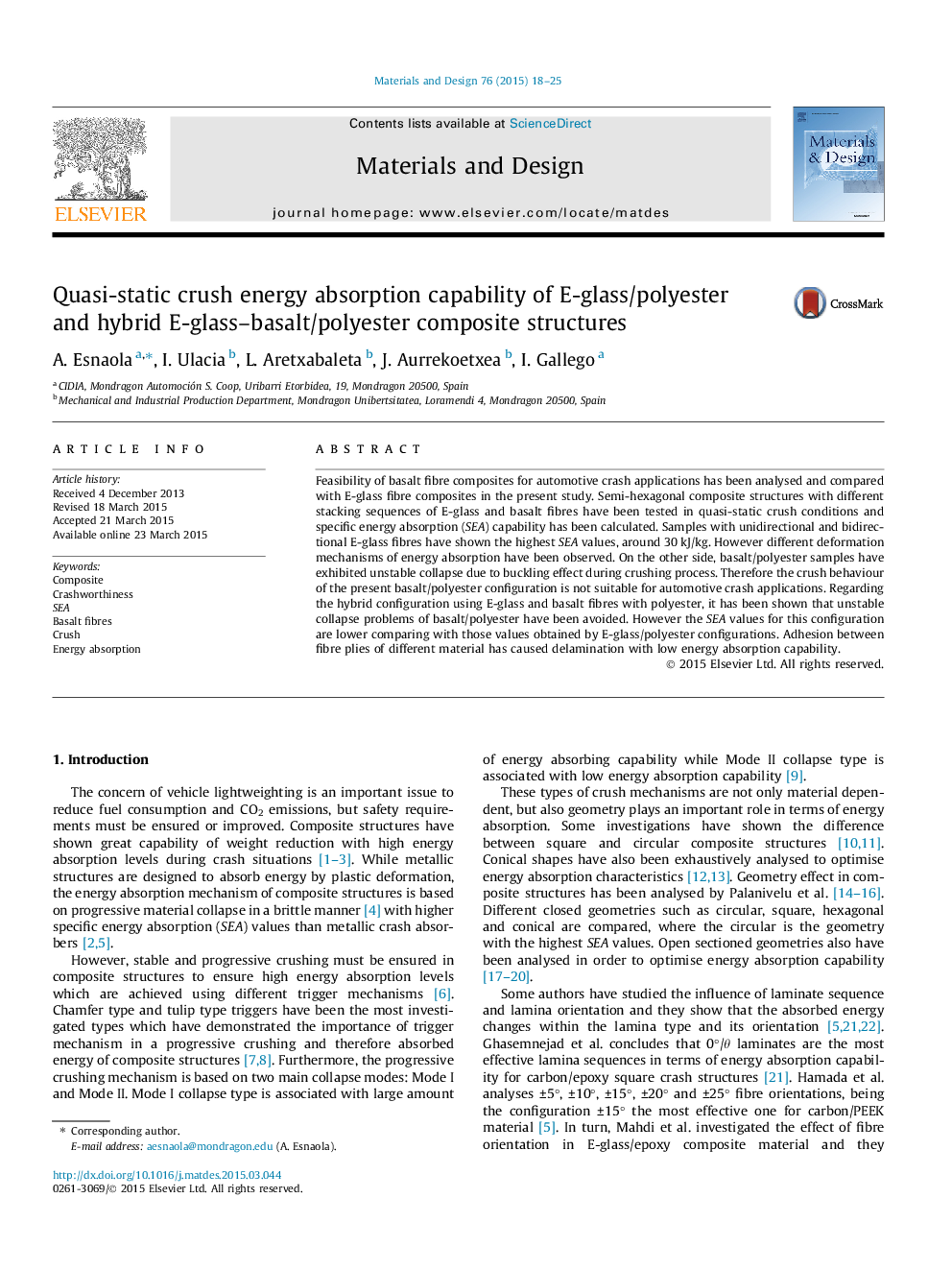| Article ID | Journal | Published Year | Pages | File Type |
|---|---|---|---|---|
| 828600 | Materials & Design (1980-2015) | 2015 | 8 Pages |
•E-glass fibres have shown the highest specific energy absorption values; 30 kJ/kg.•Bidirectional E-glass fibres dissipate more energy by axial splitting.•Unidirectional E-glass fibres dissipate more energy by delamination.•Bidirectional basalt fibres have shown unstable collapse due to buckling.•Hybrid E-glass/basalt configuration has shown stable and progressive collapse.
Feasibility of basalt fibre composites for automotive crash applications has been analysed and compared with E-glass fibre composites in the present study. Semi-hexagonal composite structures with different stacking sequences of E-glass and basalt fibres have been tested in quasi-static crush conditions and specific energy absorption (SEA) capability has been calculated. Samples with unidirectional and bidirectional E-glass fibres have shown the highest SEA values, around 30 kJ/kg. However different deformation mechanisms of energy absorption have been observed. On the other side, basalt/polyester samples have exhibited unstable collapse due to buckling effect during crushing process. Therefore the crush behaviour of the present basalt/polyester configuration is not suitable for automotive crash applications. Regarding the hybrid configuration using E-glass and basalt fibres with polyester, it has been shown that unstable collapse problems of basalt/polyester have been avoided. However the SEA values for this configuration are lower comparing with those values obtained by E-glass/polyester configurations. Adhesion between fibre plies of different material has caused delamination with low energy absorption capability.
Graphical abstractFigure optionsDownload full-size imageDownload as PowerPoint slide
